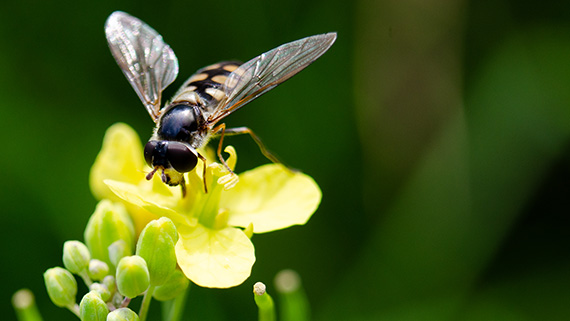Australia
May 3, 2024
Australian grain growers now have access to the latest information on the chemical toxicity of insecticides to beneficial insects in grain crops with the release of an updated version of the Beneficials Chemical Toxicity Table.
First published in 2022, the table summarises the impacts of various insecticidal and miticidal active ingredients on a range of beneficial insects such as ladybird beetles, parasitoid wasps, predatory mites, lacewings and hoverflies. The resource was developed in consultation with representatives from the grains and chemical industries.
The Beneficials Chemical Toxicity Table is produced as part of the Australian Grains Pest Innovation Program (AGPIP), a collaborative investment by the Grains Research and Development Corporation (GRDC), Cesar Australia and the University of Melbourne.
Cesar Australia project lead Rosie Knapp said understanding chemical toxicity allowed for informed decisions that achieve pest control while minimising harm to beneficial species.

The Beneficials Chemical Toxicity Table summarises the impacts of various insecticidal and miticidal active ingredients on a range of beneficial insects such as ladybird beetles, parasitoid wasps, predatory mites, lacewings and hoverflies (pictured). Photo: Lilia Jenkins/Cesar Australia
“Our aim is to simplify one component of pest control by summarising the latest research on insecticide impacts towards beneficials in one place,” Dr Knapp said.
“The table categorises insecticides based on their chemical toxicity to beneficial insects, helping growers and advisers in selecting insecticides that align with integrated pest management (IPM) principles.”
For easy interpretation, the table employs a color-coded system for toxicity ratings: green indicates low impact, yellow moderate impact, orange high impact and red very high impact. It is a dynamic resource that undergoes regular updates based on feedback and new research findings.
“Since the guide’s initial publication, we have continued to refine the toxicity table and gather new data on important beneficial insects,” Dr Knapp said.
“This includes generating cutting-edge new data on Australian wolf spiders and hoverflies, both fantastic natural predators of crop pests.”
Dr Knapp’s team is one of the first in Australia to report the toxicity of several insecticides towards these natural predators.
“Also new this year is a complimentary interactive online edition of the table, allowing users to click through to learn more about the beneficial species tested.”
Data for the table is derived from a thorough review of insecticide toxicity studies conducted at the maximum registered field rates used in the Australian grains industry.
Researchers conducted laboratory bioassays to fill key knowledge gaps, adhering to standards set by the International Organisation for Biological Control.

The updated table includes cutting-edge new data on Australian wolf spiders (pictured) and hoverflies, which are natural predators of crop pests. Photo: Rosie Knapp/Cesar Australia
GRDC manager pests Leigh Nelson said understanding the impact of insecticides on non-target insects and arachnids was crucial in IPM.
“Insecticides, especially broad-spectrum, can harm beneficial insect populations, limiting their role in natural pest suppression,” Dr Nelson said.
“The Beneficials Chemical Toxicity Table enables more strategic choices in insecticide usage that enhance, rather than hinder, beneficials.
“GRDC is proud to partner with Cesar Australia and the University of Melbourne to support the AGPIP initiative, which seeks to develop high impact, sustainable, and scientifically tested pest management options.”
Further information into the beneficial insects included in the table, including life cycles, seasonal abundance and monitoring guidelines, can be found at www.agpest.com.au.
About Us: GRDC is one of 15 Rural Research and Development Corporations (RDCs) responsible for planning, investing in and overseeing research, development and extension for 25 leviable grain crops. Our purpose is to invest in RD&E to create enduring profitability for Australian grain growers.